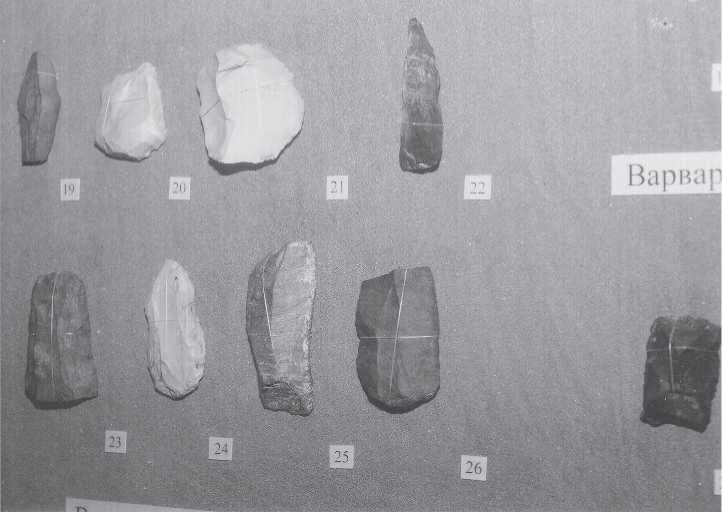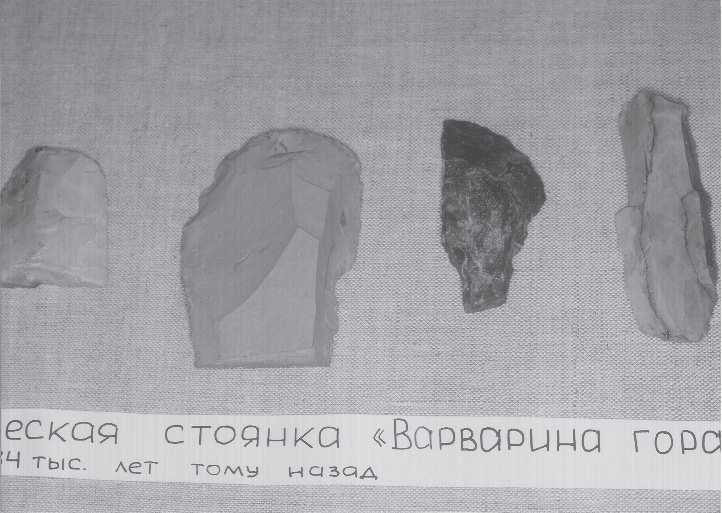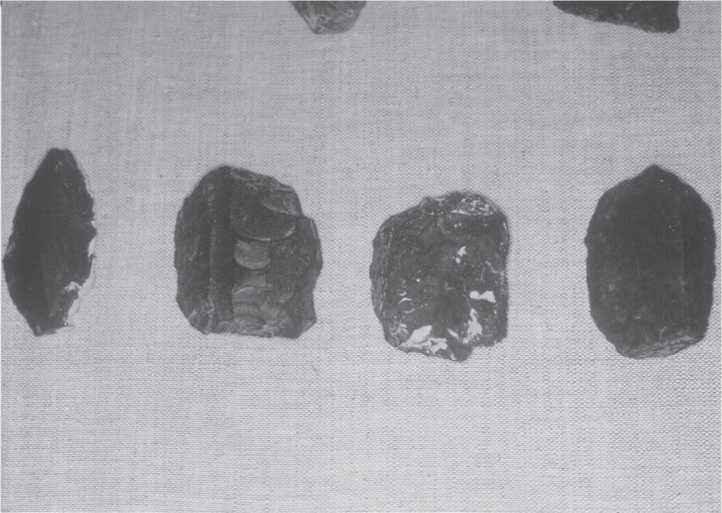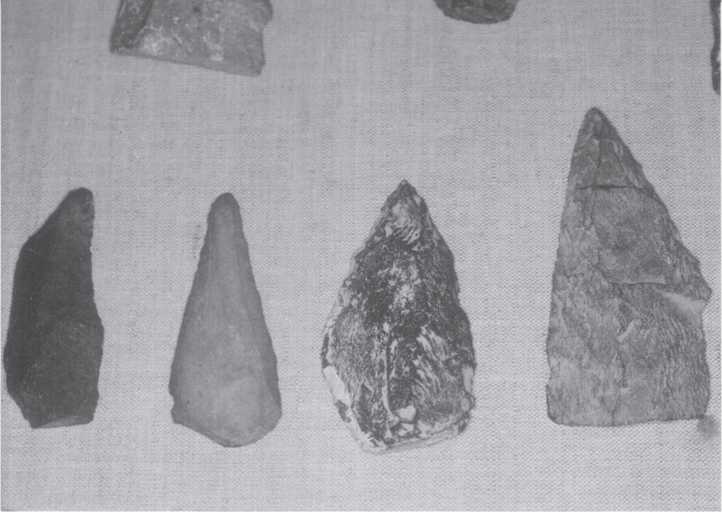Varvarina Gora is a regional neighbor to, and in the same river valley as, Kamenka. Both sites are located on the lower slopes of low hills adjacent to the valley. Both were repeatedly used, open steppe sites with early dates around 30 000 years ago, a time of late Pleistocene relative warmth. Ovodov (1987a:138) feels the faunal assemblage at Varvarina Gora indicates a pronounced steppe-like condition with some forest-steppe and forest-tundra. He also views the site as having been occupied for a long time because of the multiple remains of hearths, dwellings, and numerous “grinding” stones. Both faunal and cultural remains indicate forest vegetation in the steppe and on the northern slopes of hills. Wood would have been needed to warm the dwellings in the winter.
Both Varvarina Gora and Kamenka show similar tool types that the occupants used to hunt and process the same sorts of game animals. These were mainly gazelles and horses.

Fig. 3.195 Varvarina Gora. Stone tools, excavated in Layer 1 (ca. 17 000 BP) by Ludmila Lbova and associates, on exhibit in the Museum of Buryatia Scientific Center, Ulan-Ude (CGT neg. MBSC 7-4-03:35).

Fig. 3.196 Varvarina Gora. Stone tools excavated by A. P. Okladnikov and associates on exhibit in
The former IHPP museum. Text reads: “Paleolithic site Varvarina Gora 34,000 BP.” All the faunal remains discussed and illustrated here are from Okladnikov’s excavations (CGT color IHPP 2-10-84:34).

Fig. 3.197 Varvarina Gora. Additional stone artifacts on exhibit with those shown in the previous figure (CGT color IHPP 2-10-84:35).

Fig. 3.198 Varvarina Gora. Additional stone tools on exhibit with those in the previous two figures (CGT color IHPP 2-10-84:36).
The natural - and human-caused perimortem taphonomy of both sites is remarkably similar, with the exception of Varvarina Gora having gone through less favorable conditions for bone preservation than the exceptionally well-preserved assemblage Lbova recovered from Kamenka. The occurrence of chopping at Varvarina Gora is greater than at Kamenka, which reflects the larger proportion of pieces of big animal bone at Varvarina Gora.
The perimortem taphonomic characteristics of Varvarina Gora are broadly like those of our other open sites. Carnivore damage was slight, and there is no direct or indirect evidence of hyenas. If meat had been cooked, it must have been by hide bag - or wooden bowl-boiling, because the evidence for roasting is weak to non-existent. As elsewhere in this study, perimortem processing was intensive - that is, most bones were broken, and broken into many small pieces whose average maximum diameter is only 9.0 cm, a value that would be much smaller had our protocol not excluded from study pieces smaller than
2.5 cm in diameter.




 World History
World History









